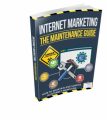Salespage Snapshot

Table of Contents
Introduction 04
Chapter 1: Effective video marketing in a nutshell 09
Chapter 2: Video marketing: the modern (and EFFECTIVE) way 16
Chapter 3: Let your competitors do your video marketing homework for you 22
Chapter 4: Modern video marketing essentials 36
Chapter 5: Figuring Out the Different Types of Video Marketing 43
Chapter 6: Article-to-Video Marketing: Is It Right for You? 47
Chapter 7: VideoScribe and Other Whiteboard Video Creation Tools: The Inside Scoop 52
Chapter 8: Slideshow Creation Tools: Are They Right for You? 56
Chapter 9: Personality-Focused Videos 60
Chapter 10: Marketing Videos on Social Media 66
Conclusion 70
Sample Content Preview
Chapter 1
What exactly is effective video marketing? What’s the big deal? Well, it really all boils down to conversions. You can try video marketing, but that’s not going to put food on your table. You have to do “effective” video marketing. There is a difference.
Effective video marketing is all about conversions. The video has to play a role in getting the viewer to whip out their credit card and buy something or click on an ad that pays you or enter their email address or zip code into a form. Whatever the case may be, the video convinces whoever is watching to take action that somehow, someway leads to you making money.
Clear enough? Well, video can do this in one of two ways. Either it converts the viewer directly or the video is part of the conversion process. Maybe it happens immediately or it can take some time. Whatever the case may be, video plays a role.
What’s so powerful about a video anyway?
When you’re watching a video, you’re actually seeing many different signals being flashed to you in the time span of fractions of seconds. You may not even be aware of them, but all these
signals are being sent to you and subconsciously you’re putting these signals together.
If you’re watching a video spokesperson, you’re paying attention to their facial expression, their demeanor, the way they say their words, and how quickly they’re talking. These and other non-verbal signals paint a picture.
It all leads to the question, “Should I trust the person or not?” which is very much related to the question that everybody asks in the back of their minds, “What’s in it for me?” Video enables marketers to answer those two questions in a very powerful way and it can be traced to the power of the human voice.
The power of the human voice
When somebody is talking to you, they’re making eye contact. They’re also talking to you with their voice. You’re not just hearing sound signals, but these sound signals pack a lot of value. You read in all sorts of meaning depending on the tone of voice, the emotions that you detect from the voice, and how quickly the person is talking.
It’s easy to tell whether somebody is confident or if somebody is basically tripping over themselves. It’s easy to tell whether somebody actually is an expert or if somebody is somehow just playing some sort of role. These are the things that you really cannot quite put your finger on but you know it when you see it and you hear it. A large part of this turns on the voice component.
The two factors that I outlined above combine to produce the secret to video marketing. What is this secret? It’s very simple: presence. Whether you have some sort of explainer cartoon or you have a slideshow with a voice-over or you’re presenting a video spokesperson looking directly in the camera, it all goes back to presence. Either the video gets front and center of the viewer so as to trigger the old sales rules, or it doesn’t.
The old sales rules still apply
As awesome as video may look, please understand that it still follows the same old rules. What are the old rules of salesmanship? They’re very basic. First, you have to get people’s attention.
Second, you have to filter them by interest. Not everybody watching your video is in your target market. Not everybody would want to buy. Not everybody has the problems being solved by the product or service you are promoting. Many people who view your video are just doing it out of curiosity. Maybe they have nothing else better to do. You need to weed those people out.
The video has to be clear in so many ways that it’s only for this type of person. That’s how you get interest. Also, the video has to be set up to filter people based on their interest quickly and efficiently.
Next, the video has to speak to the viewers’ needs. Basically, the video is saying, “Now that I have filtered you by your interest, you are watching this video because you have this problem. I understand that you have this problem and here are the most common solutions to those problems.
But, here are the problems with those solutions. I have something better. I have something that is cheaper, faster, more convenient, more effective, and more scalable.”
Finally, the old rules of salesmanship direct us to call the prospect to action. You can’t just tell them about a solution, get them all pumped up, and then leave them hanging. You’re not going to generate sales that way. You have to call them to action, but here’s the trick— you can’t just say, “Click here to order now.” That’s not going to work because everybody’s doing that.
Instead, you have to tie the call to action with the benefit. For example, “If you want to regain the beautiful and active life that you used to have before addiction, fill out this form and claim your new reality.” Do you see how that works?
Basically, you pack the benefits into the call to action and you do it in way that triggers an emotional reaction. Who wouldn’t want to get their old life back? Who wouldn’t want to live a life of freedom? Who wouldn’t want to get out from under the crushing weight of addiction or whatever problems people are facing? Video has to incorporate these old rules and it has to do it seamlessly, quickly, efficiently and in a compact way.
Video and the rule of eight
What complicates video marketing is one reality that a lot of video marketers are completely clueless about. They don’t even know that this exists. This is called the rule of eight, some would say it’s the rule of seven, but it doesn’t really matter. It’s all about multiple exposures.
Let me ask you, when was the last time you saw an ad for the first time, clicked it, and bought something? I would venture to guess that those times are very few and far between. The truth is most people would want to see an ad enough times for them to at least feel that it’s familiar enough for it to be worth taking the risk of clicking.
They click, they see what it’s about, and then they don’t buy anything. Then they see the ad again and again, and then eventually, they click through and then some of them would convert.
Other Details- 20 Articles (TXT, DOC)
- 1 Ebook (PDF), 65 Pages
- 5 Graphics (PNG)
- 1 Salespage (HTML)
- 10 Ecovers (JPG)
- 20 Promotional Ad Materials (Emails, Banners)
- Resource Report, Cheat Sheet, Mindmap, Social Media Images, Legal Page, Sales Video
- Year Released/Circulated: 2018
- File Size: 69,541 KB
License Details:
[YES] Can be packaged
[YES] You Can Use This Product Yourself
[YES] Can be sold as it is not less than $7 price tag!
[YES] Can pass on the Resell Rights privilege to your customers.
[YES] Can Add This Product to a Membership Site or Bundled Within a Product Package as a Bonus.
[YES] Can be used to create audio/webinar/video products
[YES] Can Give Away The Product (NOT The Source Code Files) To Your Subscribers, Members or Customers as a Bonus or Gift.
[YES] Can change sales page and/or graphics
[YES] Can be added to paid membership sites
[YES] Can sell master resale rights
[NO] Add to a free membership sites
[NO] You can't just pass away the product to anyone
[NO] Contents of the product can be edited, modified or altered.














